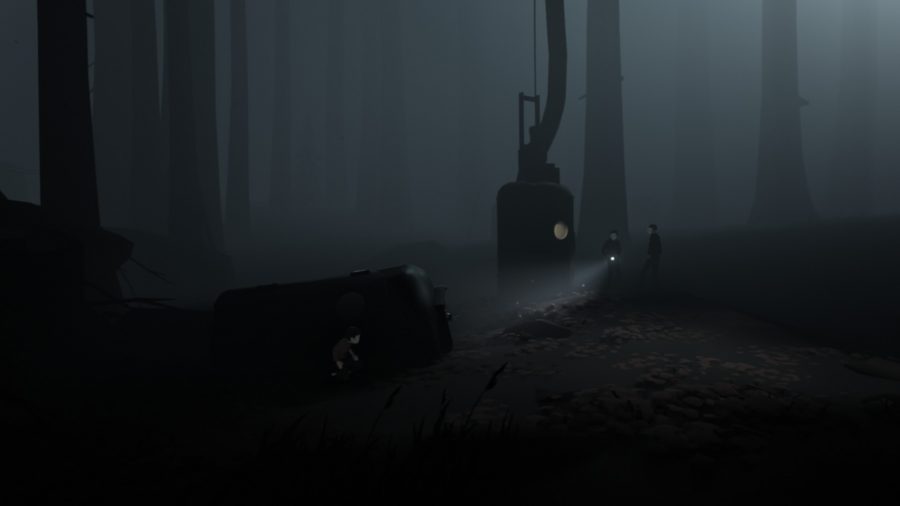“Inside” Takes Players on Minimalist Journey
Inside, a dark dystopian thriller from independent game studio Playdead, pits the player against anonymous guards, hounds and far stranger horrors.
September 9, 2016
In the middle of a dark forest, guided forward only by sparse patches of light, a little boy makes his way toward an uncertain goal. In this beautiful minimalist world, his way is sometimes barred by puzzles — none difficult enough to ever pose a significant barrier. In that sense, Inside is simple in its depiction of its protagonist’s journey through a bleak world; it consists of moving forward and overcoming obstacles. But to fault the game for being so straightforward would be to ignore its tremendous depth.
Released last June by independent studio Playdead, Inside is a puzzle-platformer that garnered a great deal of pre-release anticipation from the studio’s niche group of fans. Although Playdead is a small developer, it attained recognition in the early days of independent games with the release of Limbo, another puzzle-platformer — like Inside — that has you guide a young boy through a twisted world. Limbo was an industry darling and found great success among general audiences as well, increasing anticipation for their recent release.
One of the greatest things about Inside is its seamless presentation. The game makes sparing use of music, relying instead on ambient noise and the sounds of the world itself to keep you on edge.
The simplicity of the game’s mechanics also bleeds into its art direction. None of the characters have facial features, and the color palette of the game is generally stark, with rare cases of bright color for emphasis. The minimalist approach to sound and appearance makes the world easy to fall into. There’s no music to pull you out of Inside’s oppressive world, and the expressionless character allows you to project your feelings and unease onto your avatar.
Inside’s world is a gritty, industrialized vision of the future. Parts of the game’s huge laboratory have been abandoned to decay, dead test subjects pepper gray-washed landscapes and everything with a mind of its own wants to hunt you down. This place is hostile, somehow instilling in you a deeper drive to uncover its secrets. Strong connections between you, your character and the science-fiction world are what propel this game to true artfulness.
The game’s sense of immersion, however, makes failure incredibly jarring. The world seems real, and it wouldn’t make sense for the boy to die, as his journey isn’t over. Yet, when you make a mistake, he pays the price through graphic death sequences. Dogs, water-bound horrors and anonymous guards all haunt the game’s darkest moments. Although the checkpoints are generous and not much progress is ever lost, the visceral nature of the boy’s deaths makes them feel real enough to want to avoid.
Inside shines in both its visual storytelling and its ability to establish a deep connection between you and world. There is no language to speak of — neither spoken nor written — leaving you to pick up fragments of this broken world as they traverse it. Men in trucks with vicious dogs pursue you. You assume control over expressionless, seemingly mindless humanoid bodies with the use of strange devices. You work your way through research facilities in varying states of disrepair and witness the aftermath of gruesome experiments. These are the pieces of Inside that leave you to piece together what has happened. Fortunately, save some intense chase sequences, there’s no rush.
The end of the experience is something to behold — straightforward, touching and deeply thought-provoking in turns. Without the two-hour buildup to the finale, the sequence would mean little. But each moment in this game grasps at something just out of reach.





















